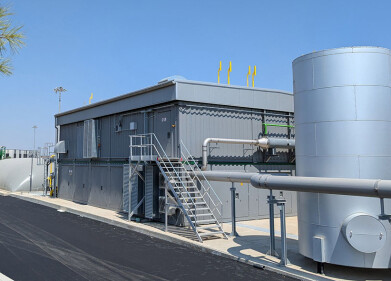Air clean up
Termite Technology to Shape New ‘Breathing’ Buildings
May 18 2013
Researchers are investigating how termite mounds can be used to shape future buildings which feature walls that breathe as part of a major new international study involving Nottingham Trent University (UK).
The $1.35millon project will examine how the unique structure of the termite mound enables stale and fresh air to be exchanged while maintaining a comfortable level of temperature.
Described as a lung by the researchers, the termite mound is the only habitat known in the animal kingdom to have been proven to exchange oxygen and carbon dioxide without losing heat, which enables termites to live in harsh climates they could not otherwise inhabit.
One of the ultimate aims of the project is to create buildings which feature walls that breathe in the same way and reduce the need for central heating or air conditioning.
Dr Rupert Soar, a reader in sustainable technologies at Nottingham Trent University, and an expert in biomimetics, will travel to India and Namibia to digitally scan and analyse a variety of termite mounds. Models of the mounds will then be made using 3D printing.
The three year project will involve research into termites’ behaviour and this information will be used to programme robotic ants to behave as termites and design these complex structures, but for humans instead of termites.
Researchers at Nottingham Trent University then aim to use this information to design in 3D print porous walls for buildings to work in the same way as the termite mound.
Dr Soar, who is based in the university’s School of Architecture, Design and the Built Environment, said: “We’re not copying nature directly; we’re copying the processes termites use to produce these phenomenal structures. We’re looking at how this can inform architecture to produce smart walls.
“Current construction thinking is to super insulate our buildings and seal them up tight, essentially separating us from the outside. This saves energy but leads to the accumulation of stale and damp air in the building.
“In nature the opposite is true - walls are structured and permeable to allow the passage of gases while retaining the temperature and moisture inside.
“When we breathe, we use the muscles around our lungs to push carbon dioxide out and draw oxygen in. By doing this, we preserve a delicate balance of temperature and moisture deep in our lungs.
“We believe as a team we have found the same principle in termite mounds in Namibia, except instead of using muscles to breathe, the termites construct a mound which uses the complex energy in turbulent wind to do the same thing.”
Funded by the Human Frontiers Science Programme, the project is a collaboration between The Wyss Institute at Harvard University, the State University of New York College of Environmental Science and Forestry, the National Museum of Namibia, the National Centre for Biological Sciences in Bangalore, India, and Nottingham Trent University.
Scott Turner, Professor of Biology at the State University of New York, and lead investigator on the project, said: “Nature still has a great deal to teach us, as long as we know the right questions to ask. That’s ultimately what we are aiming to do.”
Events
Jul 15 2025 Brighton, UK
Jul 23 2025 Sydney, Australia
Aug 24 2025 Stockholm, Sweden and online
Aug 27 2025 Busan, South Korea
Sep 02 2025 Mexico City, Mexico






.jpg)







